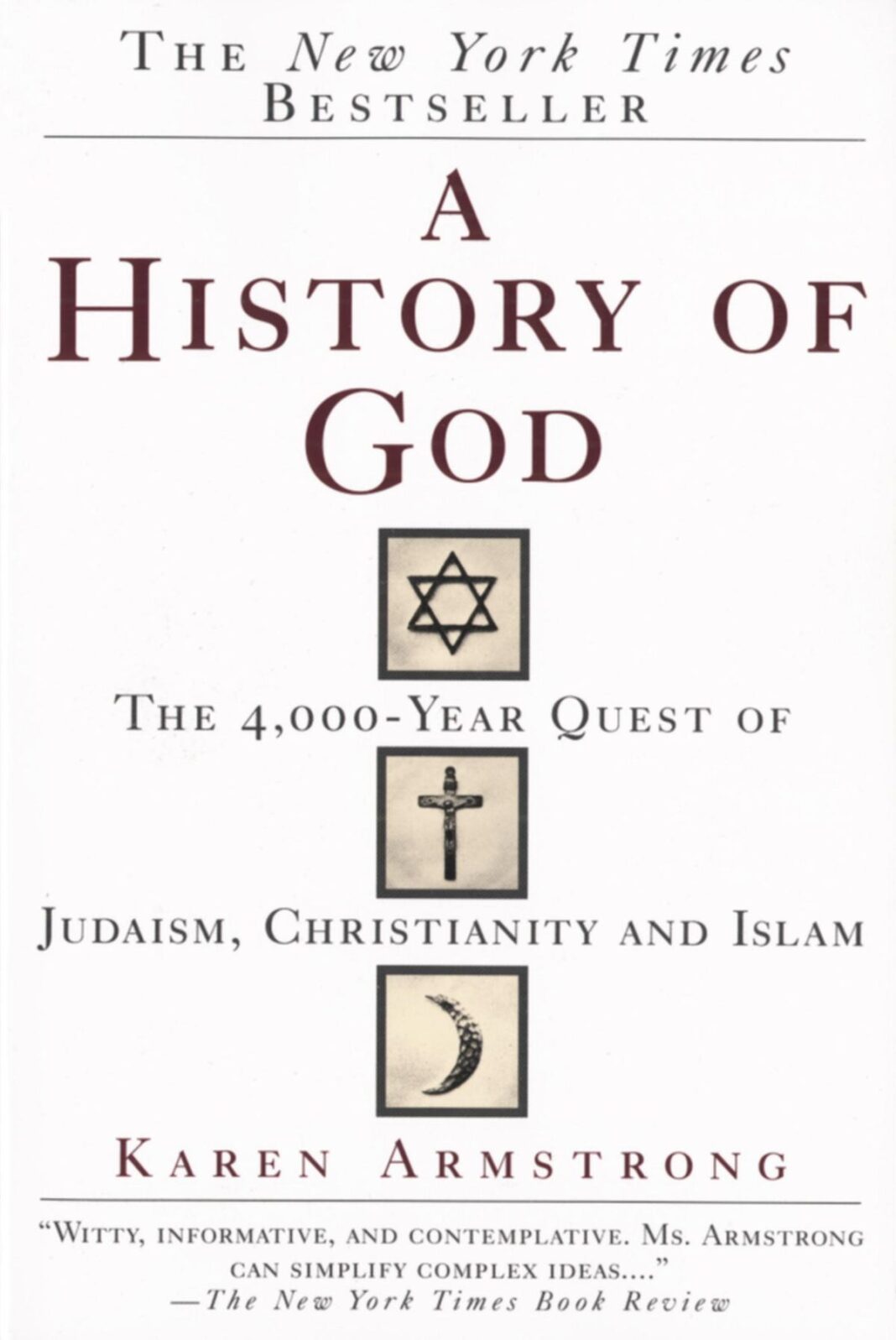Like art, religion has been an attempt to find meaning and value in life, despite the suffering that flesh is heir to. Like any other human activity, religion can be abused but it seems to have been something that we have always done. It was not tacked on to a primordially secular nature by manipulative kings and priests but was natural to humanity. Indeed, our current secularism is an entirely new experiment, unprecedented in human history.
One of the reasons why religion seems irrelevant today is that many of us no longer have the sense that we are surrounded by the unseen.
Then three gods did emerge from the primal wasteland: Apsu (identified with the sweet waters of the rivers), his wife Tiamat (the salty sea) and Mummu, the Womb of chaos.
A brief look at the Enuma Elish gives us some insight into the spirituality which gave birth to our own Creator God centuries later. Even though the biblical and Koranic account of creation would ultimately take a very different form, these strange myths never entirely disappeared but would re-enter the history of God at a much later date, clothed in a monotheistic idiom.
The story begins with the creation of the gods themselves – a theme which, as we shall see, would be very important in Jewish and Muslim mysticism. In the beginning, said the Enuma Elish, the gods emerged two by two from a formless, watery waste – a substance which was itself divine. In Babylonian myth – as later in the Bible – there was no creation out of nothing, an idea that was alien to the ancient world. Before either the gods or human beings existed, this sacred raw material had existed from all eternity. When the Babylonians tried to imagine this primordial divine stuff, they thought that it must have been similar to the swampy wasteland of Mesopotamia, where floods constantly threatened to wipe out the frail works of men.
Yet these gods were, so to speak, an early, inferior model which needed improvement. The names ‘Apsu’ and ‘Tiamat’ can be translated ‘abyss’, ‘void’ or ‘bottomless gulf’.
Consequently, a succession of other gods emerged from them in a process known as emanation, which would become very important in the history of our own God. The new gods emerged, one from the other, in pairs, each of which had acquired a greater definition than the last as the divine evolution progressed. First came Lahmu and Lahamn (their names mean ‘silt’: water and earth are still mixed together). Next came Ansher and Kishar, identified respectively with the horizons of sky and sea. Then Anu (the heavens) and Ea (the earth) arrived and seemed to complete the process.
The younger, dynamic gods rose up against their parents but even though Ea was able to overpower Apsu and Mummu, he could make no headway against Tiamat, who produced a whole brood of misshapen monsters to fight on her behalf. Fortunately Ea had a wonderful child of his own: Marduk, the Sun God, the most perfect specimen of the divine line. At a meeting of the Great Assembly of gods, Marduk promised to fight Tiamat on condition that he became their ruler. Yet he only managed to slay Tiamat with great difficulty and after a long, dangerous battle. In this myth, creativity is a struggle, achieved laboriously against overwhelming odds.
==========
Eventually, however, Marduk stood over Tiamat’s vast corpse and decided to create a new world: he split her body in two to form the arch of the sky and the world of men; next he devised the laws that would keep everything in its appointed place.
==========
Finally, almost as an afterthought, Marduk created humanity. He seized Kingu (the oafish consort of Tiamat, created by her after the defeat of Apsu), slew him and shaped the first man by mixing the divine blood with the dust.
==========
There is, however, some humour in this mythical account of the origin of humanity, which is by no means the pinnacle of creation but derives from one of the most stupid and ineffectual of the gods. But the story made another important point. The first man had been created from the substance of a god: he therefore shared the divine nature, in however limited a way. There was no gulf between human beings and the gods.
==========
The myth of Marduk and Tiamat seems to have influenced the people of Canaan, who told a very similar story about Baal-Habad, the god of storm and fertility, who is often mentioned in extremely unflattering terms in the Bible.
==========
The story of Baal’s battle with Yam-Nahar, the god of the seas and rivers, is told on tablets that date back to the fourteenth century BCE. Baal and Yam both lived with El, the Canaanite High God. At the Council of El, Yam demands that Baal be delivered up to him. With two magic weapons, Baal defeats Yam and is about to kill him when Asherah (El’s wife and mother of the gods) pleads that it is dishonourable to slay a prisoner. Baal is ashamed and spares Yam, who represents the hostile aspect of the seas and rivers which constantly threaten to flood the earth, while Baal, the Storm God, makes the earth fertile. In another version of the myth, Baal slays the seven-headed dragon Lotan, who is called Leviathan in Hebrew. In almost all cultures, the dragon symbolises the latent, the unformed and the undifferentiated.
==========
This religion is attributed in the Bible to Abraham, who left Ur and eventually settled in Canaan some time between the twentieth and nineteenth centuries BCE. We have no contemporary record of Abraham but scholars think that he may have been one of the wandering chieftains who had led their people from Mesopotamia towards the Mediterranean at the end of the third millennium BCE. These wanderers, some of whom are called Abiru, Apiru or Habiru in Mesopotamian and Egyptian sources, spoke West Semitic languages, of which Hebrew is one.
==========
This religion is attributed in the Bible to Abraham, who left Ur and eventually settled in Canaan some time between the twentieth and nineteenth centuries BCE. We have no contemporary record of Abraham but scholars think that he may have been one of the wandering chieftains who had led their people from Mesopotamia towards the Mediterranean at the end of the third millennium
==========
This religion is attributed in the Bible to Abraham, who left Ur and eventually settled in Canaan some time between the twentieth and nineteenth centuries BCE. We have no contemporary record of Abraham but scholars think that he may have been one of the wandering chieftains who had led their people from Mesopotamia towards the Mediterranean at the end of the third millennium BCE.
==========
These wanderers, some of whom are called Abiru, Apiru or Habiru in Mesopotamian and Egyptian sources, spoke West Semitic languages, of which Hebrew is one. They were not regular desert nomads like the Bedouin, who migrated with their flocks according to the cycle of the seasons, but were more difficult to classify and, as such, were frequently in conflict with the conservative authorities. Their cultural status was usually superior to the desert folk. Some served as mercenaries, others became government employees, others worked as merchants, servants or tinkers.
==========
The stories about Abraham in the book of Genesis show him serving the King of Sodom as a mercenary and describe his frequent conflicts with the authorities of Canaan and its environs. Eventually, when his wife Sarah died, Abraham bought land in Hebron, now on the West Bank.
==========
The Genesis account of Abraham and his immediate descendants may indicate that there were three main waves of early Hebrew settlement in Canaan, the modern Israel. One was associated with Abraham and Hebron and took place in about 1850 BCE. A second wave of immigration was linked with Abraham’s grandson Jacob, who was renamed Israel (‘May God show his strength!’); he settled in Shechem, which is now the Arab town of Nablus on the West Bank. The Bible tells us that Jacob’s sons, who became the ancestors of the twelve tribes of Israel, emigrated to Egypt during a severe famine in Canaan. The third wave of Hebrew settlement occurred in about 1200 BCE when tribes who claimed to be descendants of Abraham arrived in Canaan from Egypt.
==========
The two earliest biblical authors, whose work is found in Genesis and Exodus, were probably writing during the eighth century, though some would give them an earlier date. One is known as ‘J’ because he calls his God ‘Yahweh’, the other ‘E’ since he prefers to use the more formal divine title ‘Elohim’. By the eighth century, the Israelites had divided Canaan into two separate kingdoms. J was writing in the southern Kingdom of Judah, while E came from the northern Kingdom of Israel. (See Map). We will discuss the two other sources of the Pentateuch – the Deuteronomist (D) and Priestly (P) accounts of the ancient history of Israel – in Chapter Two
==========
On Mount Sinai, for example, he would appear to Moses in the midst of an awe-inspiring volcanic eruption and the Israelites had to keep their distance. In comparison, Abraham’s god El is a very mild deity. He appears to Abraham as a friend and sometimes even assumes human form.
==========
Babylon itself, the abode of the gods, was called ‘Gate of the gods’ (Bab-ili).
==========
Israelite belief in God was deeply pragmatic. Abraham and Jacob both put their faith in El because he worked for them: they did not sit down and prove that he existed; El was not a philosophical abstraction. In the ancient world, mana was a self-evident fact of life and a god proved his worth if he could transmit this effectively. This pragmatism would always be a factor in the history of God. People would continue to adopt a particular conception of the divine because it worked for them, not because it was scientifically or philosophically sound.
==========
This is a brutal, partial and murderous god: a god of war who would be known as Yahweh Sabaoth, the God of Armies. He is passionately partisan, has little compassion for anyone but his own favourites and is simply a tribal deity. If Yahweh had remained such a savage god, the sooner he vanished, the better it would have been for everybody.
==========
We shall see that Yahweh did not remain the cruel and violent god of the Exodus, even though the myth has been important in all three of the monotheistic religions. Surprising as it may seem, the Israelites would transform him beyond recognition into a symbol of transcendence and compassion.
==========
Like any human idea, the notion of God can be exploited and abused. The myth of a Chosen People and a divine election has often inspired a narrow, tribal theology from the time of the Deuteronomist right up to the Jewish, Christian and Muslim fundamentalism that is unhappily rife in our own day.
==========
In all his early appearances to Moses, Yahweh insists repeatedly and at some length that he is indeed the God of Abraham, even though he had originally been called El Shaddai. This insistence may preserve the distant echoes of a very early debate about the identity of the God of Moses. It has been suggested that Yahweh was originally a warrior god, a god of volcanoes, a god worshipped in Midian, in what is now Jordan.17 We shall never know where the Israelites discovered Yahweh, if indeed he really was a completely new deity.
==========
The so-called ‘Midianite Theory’ – that Yahweh was originally a god of the people of Midian – is usually discredited today but it was in Midian that Moses had his first vision of Yahweh. It will be recalled that Moses had been forced to flee Egypt for killing an Egyptian who was ill-treating an Israelite slave. He had taken refuge in Midian, married there and it was while he was tending his father-in-law’s sheep that he had seen a strange sight: a bush that burned without being consumed. When he went closer to investigate, Yahweh had called to him by name and Moses had cried: ‘Here I am!’ (hineni!), the response of every prophet of Israel when he encountered the God that demanded total attention and loyalty:
==========
‘Come no nearer’ [God] said, ‘Take off your shoes for the place on which you stand is holy ground. I am the god of your father,’ he said, ‘the God of Abraham, the God of Isaac and the God of Jacob.’ At that Moses covered his face, afraid to look at God.18 Despite the first of the assertions that Yahweh is indeed the God of Abraham, this is clearly a very different kind of deity from the one who had sat and shared a meal with Abraham as his friend. He inspires terror and insists upon distance.
==========
When Moses asks his name and credentials, Yahweh replies with a pun which, as we shall see, would exercise monotheists for centuries. Instead of revealing his name directly, he answers: ‘I Am Who I Am (Ehyeh asher ehyeh).’19 What did he mean? He certainly did not mean, as later philosophers would assert, that he was self-subsistent Being. Hebrew did not have such a metaphysical dimension at this stage and it would be nearly 2000 years before it acquired one. God seems to have meant something rather more direct. Ehyeh asher ehyeh is a Hebrew idiom to express a deliberate vagueness. When the Bible uses a phrase like ‘they went where they went’, it means: ‘I haven’t the faintest idea where they went’. So when Moses asks who he is, God replies in effect: ‘Never you mind who I am!’ or ‘Mind your own business!’ There was to be no discussion of God’s nature and certainly no attempt to manipulate him as pagans sometimes did when they recited the names of their gods. Yahweh is the Unconditioned One: I shall be that which I shall be.
==========
When Moses asks his name and credentials, Yahweh replies with a pun which, as we shall see, would exercise monotheists for centuries. Instead of revealing his name directly, he answers: ‘I Am Who I Am (Ehyeh asher ehyeh).’ What did he mean? He certainly did not mean, as later philosophers would assert, that he was self-subsistent Being. Hebrew did not have such a metaphysical dimension at this stage and it would be nearly 2000 years before it acquired one. God seems to have meant something rather more direct. Ehyeh asher ehyeh is a Hebrew idiom to express a deliberate vagueness. When the Bible uses a phrase like ‘they went where they went’, it means: ‘I haven’t the faintest idea where they went’. So when Moses asks who he is, God replies in effect: ‘Never you mind who I am!’ or ‘Mind your own business!’ There was to be no discussion of God’s nature and certainly no attempt to manipulate him as pagans sometimes did when they recited the names of their gods.
==========
Yahweh is the Unconditioned One: I shall be that which I shall be. He will be exactly as he chooses and will make no guarantees. He simply promised that he would participate in the history of his people. The myth of the Exodus would prove decisive: it was able to engender hope for the future, even in impossible circumstances
==========
Yahweh had proved his expertise in war but he was not a fertility god. When they settled in Canaan, the Israelites turned instinctively to the cult of Baal, the Landlord of Canaan, who had made the crops grow from time immemorial. The prophets would urge the Israelites to remain true to the covenant but the majority would continue to worship Baal, Asherah and Anat in the traditional way.
==========
These early mythical events show that from the first Yahwism demanded a violent repression and denial of other faiths,
==========
Paganism did not usually seek to impose itself on other people – Jezebel is an interesting exception – since there was always room for another god in the pantheon alongside the others. These early mythical events show that from the first Yahwism demanded a violent repression and denial of other faiths,
==========
The period 800–200 BCE has been termed the Axial Age. In all the main regions of the civilised world, people created new ideologies that have continued to be crucial and formative. The new religious systems reflected the changed economic and social conditions. For reasons that we do not entirely understand, all the chief civilisations developed along parallel lines, even when there was no commercial contact (as between China and the European area). There was a new prosperity that led to the rise of a merchant class. Power was shifting from king and priest, temple and palace, to the market place. The new wealth led to intellectual and cultural florescence and also to the development of the individual conscience.
==========
Strange as it may seem, the idea of ‘God’, like the other great religious insights of the period, developed in a market economy in a spirit of aggressive capitalism.
==========
The whole world was seen as the divine activity welling up from the mysterious being of Brahman, which was the inner meaning of all existence.
==========
The Upanishads encouraged people to cultivate a sense of Brahman in all things. It was a process of revelation in the literal meaning of the word: it was an unveiling of the hidden ground of all being. Everything that happens became a manifestation of Brahman: true insight lay in the perception of the unity behind the different phenomena.
==========
Brahman cannot be addressed as thou; it is a neutral term, so is neither he nor she; nor is it experienced as the will of a sovereign deity. Brahman does not speak to mankind. It cannot meet men and women; it transcends all such human activities. Nor does it respond to us in a personal way: sin does not ‘offend’ it and it cannot be said to ‘love’ us or be ‘angry’.
==========
The eternal principle within each individual was called Atman: it was a new version of the old holistic vision of paganism, a rediscovery in new terms of the One Life within us and abroad which was essentially divine. The Chandoga Upanishad explains this in the parable of the salt. A young man called Sretaketu had studied the Vedas for twelve years and was rather full of himself. His father Uddalaka asks him a question which he was unable to answer, however, and then proceeds to teach him a lesson about the fundamental truth of which he was entirely ignorant. He told his son to put a piece of salt into water and report back to him the following morning. When his father asked him to produce the salt, Sretaketu could not find it because it had completely dissolved. Uddalaka proceeded to question him: ‘Would you please sip it at this end? What is it like?’ he said. ‘Salt.’ ‘Sip it in the middle. What is it like?’ ‘Salt.’ ‘Sip it at the far end. What is it like?’ ‘Salt.’ ‘Throw it away and then come to me.’ He did as he was told but [that did not stop the salt from] remaining the same. [His father] said to him: ‘My dear child, it is true that you cannot perceive Being here, but it is equally true that it is here. This first essence – the whole universe has as its Self: That is the Real: That is the Self: that you are, Sretaketu!’
==========
Thus, even though we cannot see it, Brahman pervades the world and, as Atman, is found eternally within each one of us.28
==========
But two of the gods of the traditional pantheon – Maha Brahma and Sakra, Lord of the devas – came to the Buddha and begged him to explain his method to the world. The Buddha agreed and for the next forty-five years he tramped all over India, preaching his message: in this world of suffering, only one thing was stable and firm. This was Dharma, the truth about right living, which alone could free us from pain. This was nothing to do with God. The Buddha believed implicitly in the existence of the gods since they were a part of his cultural baggage but he did not believe them to be much use to mankind.
==========
Instead of relying on a god, therefore, the Buddha urged his disciples to save themselves.
==========
… the Buddha outlined his system which was based on one essential fact: all existence was dukkha. It consisted entirely of suffering; life was wholly awry. Things come and go in meaningless flux. Nothing has permanent significance. Religion starts with the perception that something is wrong.
==========
The Buddha taught that it was possible to gain release from dukkha by living a life of compassion for all living beings, speaking and behaving gently, kindly and accurately and refraining from anything like drugs or intoxicants that cloud the mind.
==========
Effectiveness rather than philosophical or historical demonstration has always been the hallmark of a successful religion: for centuries Buddhists in many parts of the world have found that this lifestyle does yield a sense of transcendent meaning.
==========
The Buddha compared the process of rebirth to a flame which lights a lamp, from which a second lamp is lit, and so on until the flame is extinguished. If somebody is still aflame at death with a wrong attitude, he or she will simply light another lamp. But if the fire is put out, the cycle of suffering will cease and nirvana will be attained.




